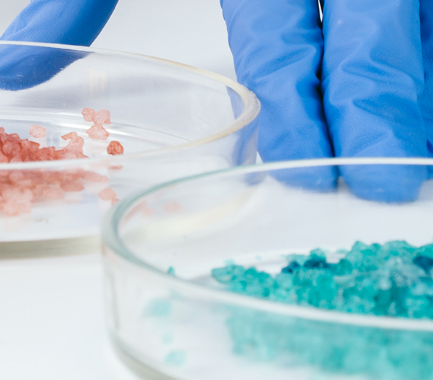Your contact
PENPET-Team - Hamburg

Christoph Meister
Sales
Tel. +49 (0) 40 - 675 7 99 30
sales@penpet.de
Get in touch with us.
Sodium decyl sulfate
Sodium decyl sulfate is a chemical compound that belongs to the group of sodium salts of organosulfates and is used as a surfactant and as an emulsifier. The substance is used as a foaming and dispersing agent in the manufacture of household and industrial cleaning products, latex products, fire-fighting foam, polymeric plastics and plasterboard. Sodium decyl sulfate is therefore important for the building materials industry, firefighting and the chemical industry, among other things.
At PENPET you get sodium decyl sulfate of the highest quality, from a reliable partner who will also meet your requirements in the long term. We look forward to receiving your inquiry for an individual offer. Prompt delivery of the powdered solid can be made in packages with different weights.
CAS no. 142-87-0
EINECS no. 205-568-5
Molecular formula: C10H21NaO4S
Synonyms: Sodium Decyl Sulfate
Areas of application: Surfactant and emulsifier, used in detergents, in firefighting and in the manufacture of plastic and building materials
More Information
As a salt, sodium decyl sulfate is made up of two electrically charged components that are linked to form a crystal structure. The substance consists of positively charged sodium ions and negatively charged decyl sulfate ions in balanced numbers. Formally, the latter represent an organic ester of sulfuric acid with the simple and unbranched alcohol decanol. In the center of the compound there is a sulfate group with four oxygen atoms. Of these, two atoms are each connected to the sulfur atom via a double bond. One of the remaining oxygen atoms forms the connection to the decyl group, while the fourth oxygen atom is simply negatively charged in the absence of another bond and represents the charge center of the decyl sulfate ion.
In aqueous solution, the ions of the sodium decyl sulfate salt separate. In this form, the free decyl sulfate ions act as effective surfactants because, on the one hand, they have an electrically very polar part due to the center of charge and, on the other hand, they have electrically strongly nonpolar properties due to the long, aliphatic decyl radical at the other end of their structure.
Under normal conditions, sodium decyl sulfate exists as a white to yellowish solid in the form of a crystalline powder. However, the substance can be melted by heating to 192 °C. The salt has hygroscopic properties, attracts moisture and easily turns into an aqueous solution. In contrast, sodium decyl sulfate is only very poorly soluble in organic solvents.
The crystalline solid is chemically very stable. Sodium decyl sulfate can be stored for a long time when stored in a cool, airtight and dry place. When it comes into contact with the moisture in the air, the salt is already partially converted into an aqueous solution. Violent reactions and decomposition of the compound can occur with strong oxidizing agents and acids.
The combustion or thermal decomposition of sodium decyl sulfate produce irritating and harmful gases. Among other things, carbon monoxide, carbon dioxide, sodium oxides and sulfur oxides are released.
Sodium decyl sulfate is a hazardous substance that can cause acute and chronic health problems. Contact with the compound can cause redness, irritation and painful chemical burns on the skin. Soaked parts of the body should be cleaned immediately with water. If symptoms persist, seek medical advice. Irritation and chemical burns of this kind can cause long-term damage to the eye. Visual impairments are possible. Rinse the affected eye immediately under running water and carefully remove any salt residue. Ophthalmological treatment must then be arranged.
Inhalation of dust from the substance can cause irritation of the respiratory tract, coughing and breathing difficulties. After swallowing the salt, painful irritation of the mouth, esophagus and stomach lining is to be expected. Gastrointestinal symptoms such as diarrhea, vomiting and nausea can also occur. The absorption of sodium decyl sulfate into the metabolism can cause serious symptoms of poisoning. If poisoning is suspected, seek prompt medical attention.
Sodium decyl sulfate may harm aquatic organisms and has been evaluated as a significant water pollutant. The compound must therefore not enter water bodies, the ground or waste water. The competent authorities must be informed of the escape of the substance into the environment. However, the transport of sodium decyl sulfate is not subject to any special regulations.
